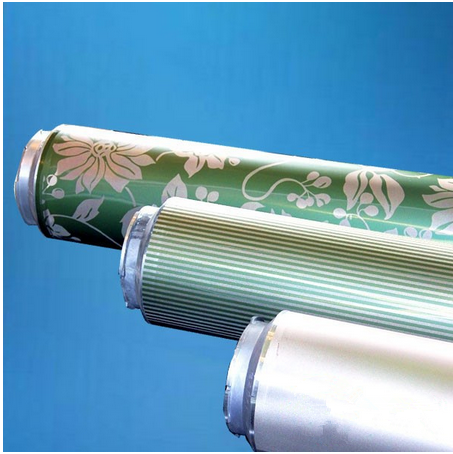| Place of Origin: | CHINA |
| Brand Name: | LIANGRU |
| Certification: | ISO |
| Model Number: | 125M |
| Minimum Order Quantity: | Different goods has different MOQ |
|---|---|
| Price: | negotiable |
| Packaging Details: | plywood cases or as you required |
| Delivery Time: | 15-25days |
| Payment Terms: | T/T,L/C or others |
| Supply Ability: | sufficient supply |
| Function: | Printing | MOQ: | According To Order |
|---|---|---|---|
| Quality: | High Quality | Packaged: | Standard Export Package |
| Name: | Textile Fabric Nickel | Feature: | Excellent Elasticity |
Mechanism Textile Fabric Nickel High Elasticity Screen Printing Rotary
Screen Specification:
| Repeat(MM) | 640 725 819 914 1018 1206 1450 1680 | ||
| Mesh | Thickness(μm) | Open Area(%) | Hole Diameter |
| 125 | 100-105 | 14-16 | 79 |
The only factor that determines the production rate is the speed of screen rotation/substrate movement (remember, these values are the same), which is limited primarily by the type and rheology of the ink being used. Productivity Among the biggest attractions of rotary screen printing is its production speed. On a rotary press, images are applied to the entire width of the substrate as the material moves continuously through the printing mechanism--substrate size really has no impact on press speed. Because of the way rotary presses operate, their production rates are reported as linear measurements and typically fall within a range of 100-450 ft/min (30-100 m/min), depending on the model and the specific application.
Not only does this approach reduce printing times, but it also removes the floodbar as a variable from the printing process.As previously noted, the flooding and printing action on a rotary system is all part of the same continuous motion, and separate strokes for these functions are not required.
Users simply thread the desired material into a rotary machine from a reel at one end, and the machine continues to pull more material through as needed.Material handling Because rotary presses work with web-fed materials, they eliminate the need to feed substrates into the press piece by piece, as is common with flatbed units.
The virtues of rotary screen printing are most apparent when the process is compared to traditional flat screen printing.
Delivery time: within 15 to 25 days
Package: plywood cases or as you required
bear high temperature
Excellent toughness & elasticity,
be used for 5~7 times repeatedly,
saving dyestuff,
Rotary screen printing:

Black Roll Cotton Stenter Brushes Wheel Mini For Textile Machinery
Custom Textile Machinery Spare Parts Color Paste Pump For Rotary Screen Printing
Stainless Steel Expanding Roller Opener Cylinder Hydraulic High Stability
Textile Machinery Flat Selvedge Uncurler Electrical For Stenter Nylon
High Strength Guided Vertical Clip Chain Smooth For Stenter Machine Patrs
Manganese Stenter Machine Parts Anti - Rust Germany Krantz Pin Holder
High Density Rotary Printing Machine Spares , 20mm Rotary Magnetic Rod
Elastic Rotary Printing Machine Spares Dimensional Stability Aluminum 640 End Rings
640 Die Cast Rotary Printing Machine Spares Zimmer Type End Ring